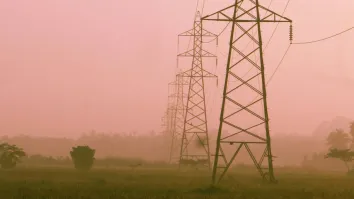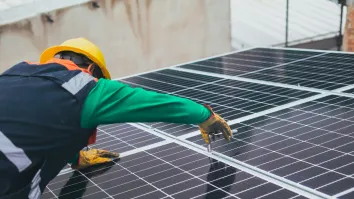
Why is the Philippines ignoring renewables policy potholes?
Support has started on a policy level, but much of the groundwork remains undone.
When the former director for the Philippine renewables development stepped up to a recent regional conference, it was a bittersweet moment: The country has started rallying behind renewable energy, with projects and investors lining up in response, but there are still major hurdles preventing the sector from truly taking off. Coal-fired power generation continues to be a preferred solution to the country’s energy needs, which are driven by strong economic growth, but the boons of renewable energy are becoming harder to ignore.
The abolition of pass-through costs for fossil fuels, the scrapping of the “first to operate, first to bid” policy for energy developers and moving towards competitive selection are the key policy changes that the Philippines must undertake to help improve the renewables sector and Philippine energy situation, says Pete Maniego, former National Renewables Energy Board (NERB) director.
Junk “first to operate, first to bid”?
Maniego proposed the removal of the pass-through provision for fossil fuels, which he argues will help level the playing field and improve the current rate-setting mechanisms in the country. Under the Electric Power Industry Reform Act, power generators that use fossil fuels can pass on fuel costs to consumers, while renewable energy developers cannot, so the latter group are forced to absorb all the risks inherent to using renewable energy sources.
He also suggested scrapping the “first to operate, first to bid” policy for energy developers, which he says only favours the big players and prevents smaller players from participating in project biddings due to an inability to secure bank loans. This policy grants an advantage to big conglomerates that can easily access capital and credit, and undermines the open energy market.
“I think it’s about time developers also take the risk as far as fuel costs are concerned,” says Maniego. “Right now, admittedly coal prices, fuel prices are lower, [but] we don’t know how long that will last,” he added, noting that operating costs for solar and wind power facilities have been declining in recent years.
To ensure more players for both renewable and non-renewable energy projects could be accommodated, the Philippines could also adopt a policy oriented towards competitive selection, similar to those already put in place in other countries.
Maniego argues that removing these policy roadblocks will be critical to bolstering the Philippine energy sector as it tries to keep up with the country’s robust economic expansion. It will also clear the path for rapid solar energy development, which is particularly promising since it can be installed in off-grid areas scattered across the archipelagic country.
Revisit current rules
Anabele Natividad, vice president for project development at Bronzeoak Philippines says that while there has been a policy shift towards renewable energy in the last few years, there is a need to revisit existing rules. Doing so will enable the country to tap into the investor interest, which has been growing over the years, and create a bigger market for renewable energy.
While advocates for renewable energy wait for stronger policy backing that will bring down costs, the reality on the ground is that regions like Visayas and Mindanao cannot rely solely on renewable energy. Reliability is paramount for these fast-growing regions and has made coal-fired power plants a necessity to avoid costly power disruptions.
Reliability is paramount
“Although there has been progress in renewable energy projects, the region needs to supplement these developments with base load capacity; otherwise, if the wind or solar power supply is down, reliability will be compromised,” says Francisco C. Sebastian, chairman at Global Business Power Corporation, in an interview with The Oxford Business Group “For a developing country like the Philippines, the cost of renewable energy and indigenous power sources is high, and additional base load is required to ensure power security and to deliver a stable supply.”
With its expanding economy and climbing energy demand, the Visayas region has been attracting more energy developers and many projects are currently under construction or expansion. In the past, the main challenge for power generators, especially those that want to put up coal-fired power plants, was changing the mindset of local communities and governments that oppose such plants. But a more open dialogue and a larger allocation for environmental protection seems to have softened their adversarial stance.
“There have been significant efforts put into information campaigns where the public has been educated about coal and global warming,” says Sebastian, adding that for coal-fired plants, an estimated 30% of the project cost is spent on clearing up carbon emissions and raising environmental standards ahead of existing regulations, particularly in terms of soil and water testing.
In Visayas, government officials have been providing support to facilitate private-public collaboration in power generation to increase reliability, while also tapping into technology to minimise pollution. “Reliability is crucial in power generation, especially in the islands throughout the Visayas region. Although transmission lines exist, one would need power plants on the islands themselves in order to ensure technical reliability and energy security. Cities deprived of power cannot be reliable places of business,” says Sebastian.
Power shortages
Meanwhile, in the Mindanao region which sits south of Visayas, power outages are nothing new. But a slew of independent power producers (IPP) are attempting to address the power supply gap with a slew of coal-fired power plants. Renewable energy, such as solar power and biomass, could still play a key role in this region, but these may be confined in smaller areas.
“Mindanao has historically undergone shortages of power. Only recently has there been a significant drive for independent power producers (IPPs) to build their own power plants – mostly coal-fired or bunker diesel facilities – which are already in the process of being built or about to be commissioned,” says Tirso G. Santillan Jr, CEO at Alsons Consolidated Resources, in an interview with The Oxford Business Group.
“Should all this capacity be finalised, the region would appear to face an impending oversupply. However, given that it has experienced looming power interruptions and brownouts from 2010 to 2014, demand has been widely suppressed,” he adds. Santillan reckons that once an increased supply of stable power becomes available, the demand suppressed in recent years will surge. He recalls that the Visayas region also had a similar experience, with power plants built to offset shortages, which then led to a sudden surge of demand of up to 12%. Residential users, for instance, would start to purchase air conditioners while factory owners would be more willing to expand their operations.
Transmission troubles
Renewable energy, while promising, may end up playing a more supportive role in the Mindanao power grid. Santillan says Mindanao is not well suited for wind power due to the low wind speeds in the region. As for solar power generation, the Sarangani province offers the best site as it has the longest sunshine in the archipelago, although financial viability is still a major concern.
“After the awarding of the feed-in-tariff (FIT), there have been significant developments in solar power generation across the country,” says Santillan. “Although there are a number of prospective solar projects in Mindanao, they still need a FIT rate to make them viable. This is because the technology has not yet fully matured.”Biomass is also viable but only in areas like Bukidnon where sources of feedstock are concentrated due to the presence of sugar mills. Supporting a biomass project in Mindanao will require an ample supply of feedstock, but currently sugarcane tops in the region is largely used for livestock, which can prove to be a challenge to potential project developers.
Santillan believes there is a significant potential source of power generation from run-of-river hydroelectric power plants, and players with expertise in hydrology and water flow volumes should be able to push out projects of sizeable generating capacity.Whilst there is contention on the importance of renewable energy in the Philippines as the country tries to balance economy growth, energy security, and environmental sustainability, industry executives appear to agree on one thing: A need to address ongoing transmission and distribution troubles.



















 Advertise
Advertise







